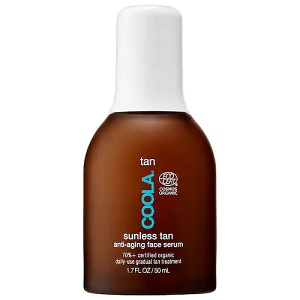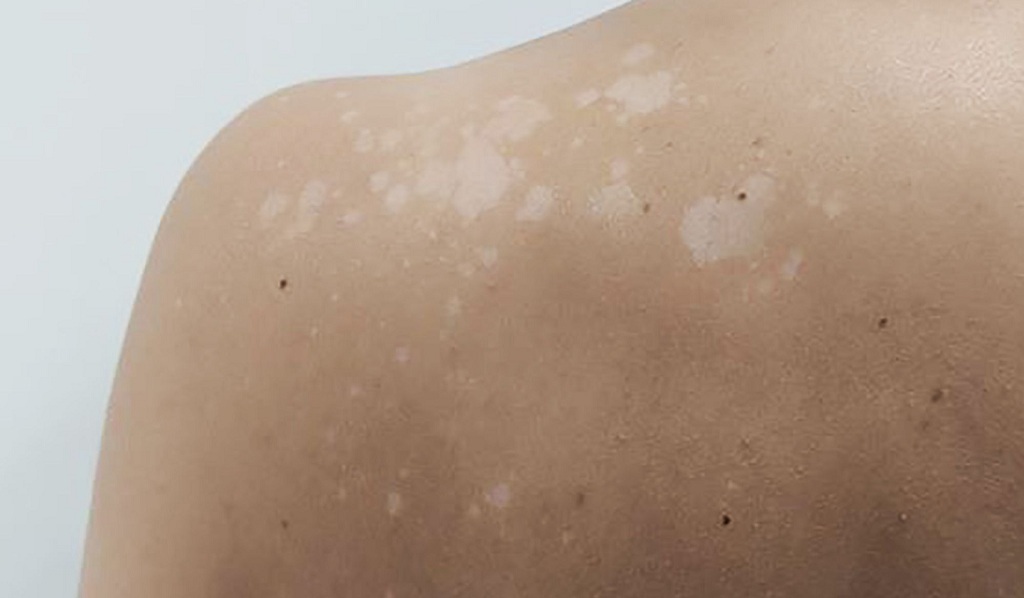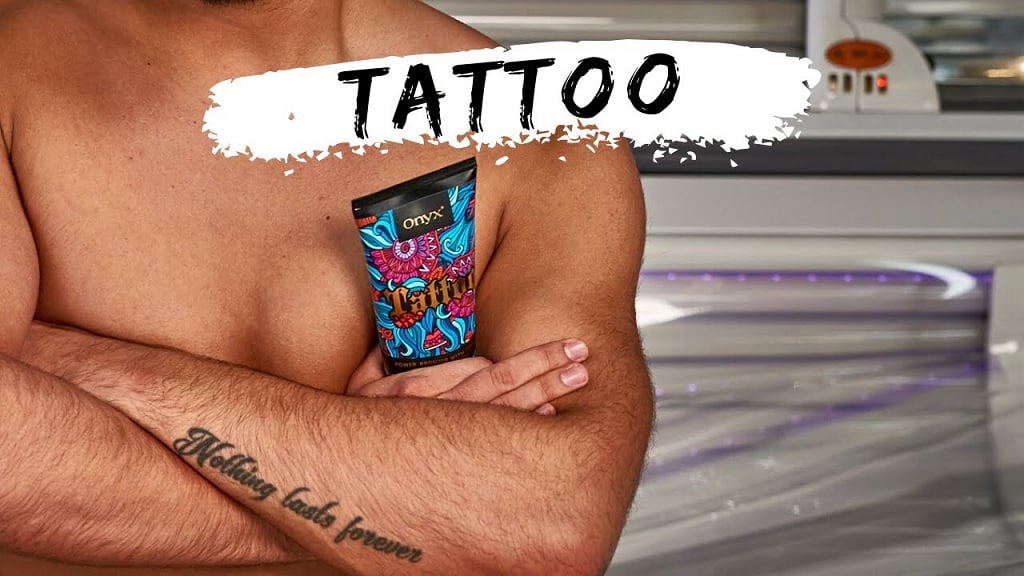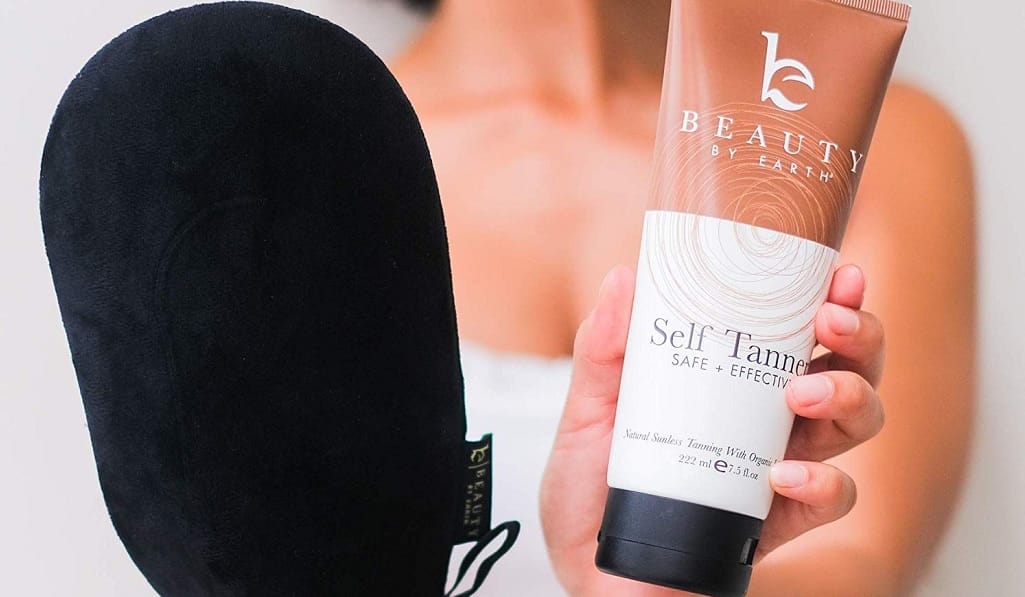If you’ve been outdoors a lot over the years, or are a dedicated tanner, you might’ve started seeing little white spots on the skin after sun exposure. Do these white sun spots go away?
Since they don’t fade much on their own, we’re going to talk about how to get rid of white spots from tanning.
How come when I tan I get white spots?
The best advice we can give you is this: show the white spots to a dermatologist. They’re likely to be idiopathic guttate hypomelanosis, but then again they could be white spots from tanning bed fungus (yuck). It’s smart to know what you’re dealing with before you start trying to treat it.
The little white patches are areas of skin with low or no melanin. The lack of pigment means they don’t tan like the rest of the skin (1).
The spots are most likely to appear on the hands, arms, neck, and face as those are most exposed to sunlight. People in their forties and fifties start noticing them. The theory is that the melanin process is interrupted by years of ultraviolet damage.
Sadly, there’s no surefire treatment to get rid of white patches on the face or anywhere else, for that matter. However, using sunscreen can lower your risk and slow down the development of the spots caused by hypopigmentation (2).
What do the white spots from tanning look like?
The little patches are usually smooth to the touch. They are typically teardrop-shaped and measure between two to six millimeters in diameter.
Women or more likely to develop them than men, but approximately 85% of people over 40 have them anyway.
They become more noticeable the more you tan.
How to avoid white spots in tanning bed?
Since tanning can make white spots worse, how can you manage this?
The first solution that dermatologists recommend is to use sunscreen. Yes, you can still tan with sunscreen because it filters out most but not all of the UV rays. However, it’s the accumulated UV exposure that seems to damage pigment production so continuing to tan may worsen the problem.
The other alternative is to simply stop tanning. Although we know this is no fun, there are other ways to bronze. More on that in a moment.
How to treat white spots from tanning?
Now it’s time to talk about how to get rid of white spots from tanning. There are two methods: make them go away or cover them up.
The first technique for erasing them is hit or miss and it takes quite a while if it works at all. Seeing a dermatologist for microdermabrasion, chemical peels, or laser treatments will probably get you better results.
Meanwhile, the second method is 100% effective and instantaneous.
Let’s start with at-home treatments to erase white spots, a.k.a. IGH or idiopathic gluttate hypomelanosis.
What you can do at home to get rid of white spots
While some have tried topical steroid creams, even prescription-strength, the results are disappointing. Worse, long-term use of corticosteroids can damage the skin.
A better option is to stimulate cellular turnover with retinoid cream. Not only will it exfoliate the skin, but it also smooths wrinkles and gives it a younger appearance. Again, this is not a quick fix for white spots. Also, it takes weeks to months to see a significant difference in skin texture and it may not affect the white spots at all.
Here’s an example of retinol cream to get rid of white patches on the face:
LilyAna Naturals Retinol Cream for Face

There are other brands of retinol cream that you might recognize like RoC. But we prefer the upstart LilyAna Naturals that’s been around since 2015. We’re not the only ones charmed by this vegan, natural product. You’ll find that the beauty editors of People, Cosmopolitan, and BuzzFeed love it, too.
Not only does the cream promise to clear up blemish-prone complexions, but it also firms crepey skin, eliminates milia, and minimizes dark circles. Although not specifically designed to get rid of white spots, it does offer to treat UV damage.
Moreover, this is a mild and moisturizing formula packed with antioxidants and natural goodness. It has green tea, shea butter, jojoba, and aloe to prevent the dryness associated with retinol treatments. Plus, it doesn’t use parabens, phthalates, or petrolatum.
Advanced Clinicals Retinol Cream

As much as we love the affordable retinol cream above, it still gets expensive to use it for the body as well as the face. We suggest this product to treat white spots on the arms or hands. It’s also paraben-free, unlike many other retinol creams.
The generous-sized jar with a pump top should last for quite a while. The cruelty-free formula is made in the USA and backed by a satisfaction guarantee.
If there’s any downside it’s that it relies on mineral oil which is why it’s not our top pick for use on the face. Still, if you have dry skin, you may find that it’s exactly what you need.
How to cover up white spots from tanning
While you wait for the retinol to work its magic, we highly recommend disguising those pesky white spots with airbrush makeup, long-wear foundation, self-tanning, or bronzer.
Airbrush makeup, foundation, and bronzer work instantly to give the skin a flawless, tanned appearance. Unfortunately, it only lasts for a few hours.
But sunless tanning or spray tanning lasts up to ten days. At-home self-tanning products will give you a beautiful bronze for four to seven days or more.
COOLA Organic Sunless Tan Anti-Aging Face Serum

No matter what type of complexion you have, COOLA’s serum will give it a healthy glow. It’s suitable for dry, combination, and oily faces, plus it increases the skin’s firmness and elasticity.
The active tanning ingredient is dihydroxyacetone (DHA) made from sugar beets. It’s natural and Eco-CERT-approved.
DHA gets rid of white spots
How does DHA work? And how does it get rid of white spots from tanning? Well, DHA doesn’t do anything with the skin’s natural pigment or melanin. The lack of melanin is the root of the problem when it comes to white spots. DHA doesn’t even go that deep. Instead, it works on the surface of the skin which is why it can give you a smooth, even tan.
DHA interacts with the epidermis to turn it brown kind of like a sliced apple exposed to the air. It’s harmless and effective.
Depending on the concentration of DHA in a sunless tanning product, it can give you a dark tan overnight or take a couple of days for a golden glow.
This face serum, for example, will make a noticeable difference in only a few hours. Use it again the next day to deepen the color. Then, your new tan should last up to three days. In other words, you only need to apply the serum two or three times a week to enjoy an eternal bronze.
Moreover, the serum is soothing and moisturizing with Centella asiatica, argan oil, and hyaluronic acid. If you have oily skin, just apply sunscreen over the top and you’re good to go. If you have dry skin, let the serum absorb before applying moisturizer.
What about the self-tanning smell?
Ah, so you know about that unique smell from DHA interacting with your skin. No worries, 98% of the participants in a consumer study said that this serum does not have the typical odor. It’s not greasy or sticky, and it makes for a natural-looking tan.
What else causes white spots besides tanning?
Here’s why you need a doctor to check the white spots. There are other things besides tanning that can cause them.
For instance, a lack of vitamins B12 or D can lead to white patches on the arms. Also, vitiligo, which is a lack of melanin, can appear on the face, neck, and arms. But vitiligo typically makes bigger white patches than IGH.
Lastly, it’s gross but you can get a fungus from a tanning bed. It’s called tinea versicolor, a type of yeast infection on the skin.
Once you’re assured that those little white dots are harmless, treat yourself to an all-over tan from a bottle.
St. Tropez Self Tan Classic Bronzing Mousse

This is the iconic sunless tanning mousse that provides a medium golden tan that lasts up to 10 days with only one application. What’s the catch? Don’t get wet for at least four hours after applying it, which is why we suggest putting it on at bedtime. No sweating, no swimming, and no showering so that the DHA can do its job.
What’s more, St. Tropez has a nifty stink-squashing system that prevents the sunless tanning odor. And the mousse itself is tinted so that you can easily see where you’ve applied it. But once it dries, it won’t rub off onto clothing or sheets. The vegan formula absorbs in about 5 minutes.
How to cover up white spots with self-tanner
If you want a natural-looking tan that isn’t patchy, streaky, or orange, here’s how to do it.
Start by shaving and exfoliating the day before. At a minimum, complete this part in the morning and apply self-tanner at night. You need to let your pores close so that the tanner doesn’t settle into them and leave little polka dots.
Thoroughly moisturize after shaving and exfoliating. Any dry patches will soak up the product and go darker.
On the day you tan, shower first so that you’re applying the self-tanner to clean, dry skin. You can put a little oil-free moisturizer on elbows, knees, ankles, and knuckles to keep them from absorbing too much mousse.
It’s easiest and cleanest to apply self-tanner with a mitt or gloves. It keeps it from soaking into the cuticles or staining the palms. It takes about 1 full pump for each section of the body, so blend that section before moving on to the next. It helps to have someone to do the back.
Clean your hands if you didn’t use a mitt or gloves and wait at least 5 minutes before dressing. Try not to sweat or get wet for the next 4 to 8 hours.
The next time you shower, the guide color will wash off and you should be able to see your new tan underneath.
Just like a real tan, the color will gradually fade, with some patches going faster than others depending on how much water exposure and friction they get.
For even less effort, check out the gradual self-tanner below.
Bondi Sands Everyday Gradual Tanning Milk

You use lotion every day, right? Switch to this gradual tanning milk and the daily maintenance keeps your golden glow intact all year long.
It’s not as quick-acting as tanning mousse, wipes, serum, or spray tanning. However, it only takes a couple of applications to make a perceptible difference in skin color.
Furthermore, the soothing formula smells like cocoa butter and has vitamin E and aloe to hydrate the skin.
On the downside, you will catch a whiff of the self-tanning odor, but it’s not very strong and doesn’t last more than a couple of hours.
How to use sunless tanning lotion to cover up white spots
The active ingredient in the lotion above is DHA, so the same rules apply. Put it on clean, dry skin and wash your hands afterward to avoid staining palms and cuticles. Try not to sweat or get wet for a few hours after applying it.
Neutrogena Micromist Airbrush Sunless Tanning Spray

You know what the hardest part of self-tanning is? Doing the back. Thankfully, Neutrogena’s Micromist makes it easy. It’s a continuous spray, not a pump top, plus it works upside down and sideways.
What’s nice is that you don’t even have to rub in the mist because the spray is ultra-fine. It will take a little practice, but if you hold it about six inches away from the skin, it’s not hard to cover everything evenly.
The formula is oil-free and quick-drying. It has witch hazel, a moisturizing astringent, so it’s helpful for acne-prone skin.
What’s the trick? Be sure to choose the right shade. Then, take it easy on dry spots like elbows and knees. If you want to use it on your face, it’s best to spray it on your hand then pat it on. Reviewers say the can lasts for up to five or six full-body applications.
In conclusion, we hope all this information helps you get rid of white spots and enjoy a beautiful tan.
Sources:
1. https://health.clevelandclinic.org/why-does-tanning-bring-out-white-spots-on-my-skin/ Why Does Tanning Bring Out White Spots on My Skin? The Short Answer from a dermatologist, by Christine Poblete-Lopez, MD, published March 27, 2018
2. https://dermcollective.com/white-spots-on-skin-from-sun/ White Spots on Skin from Sun Exposure: Causes, Treatments, & Prevention, by Lauren Sharkey, published December 4, 2019




